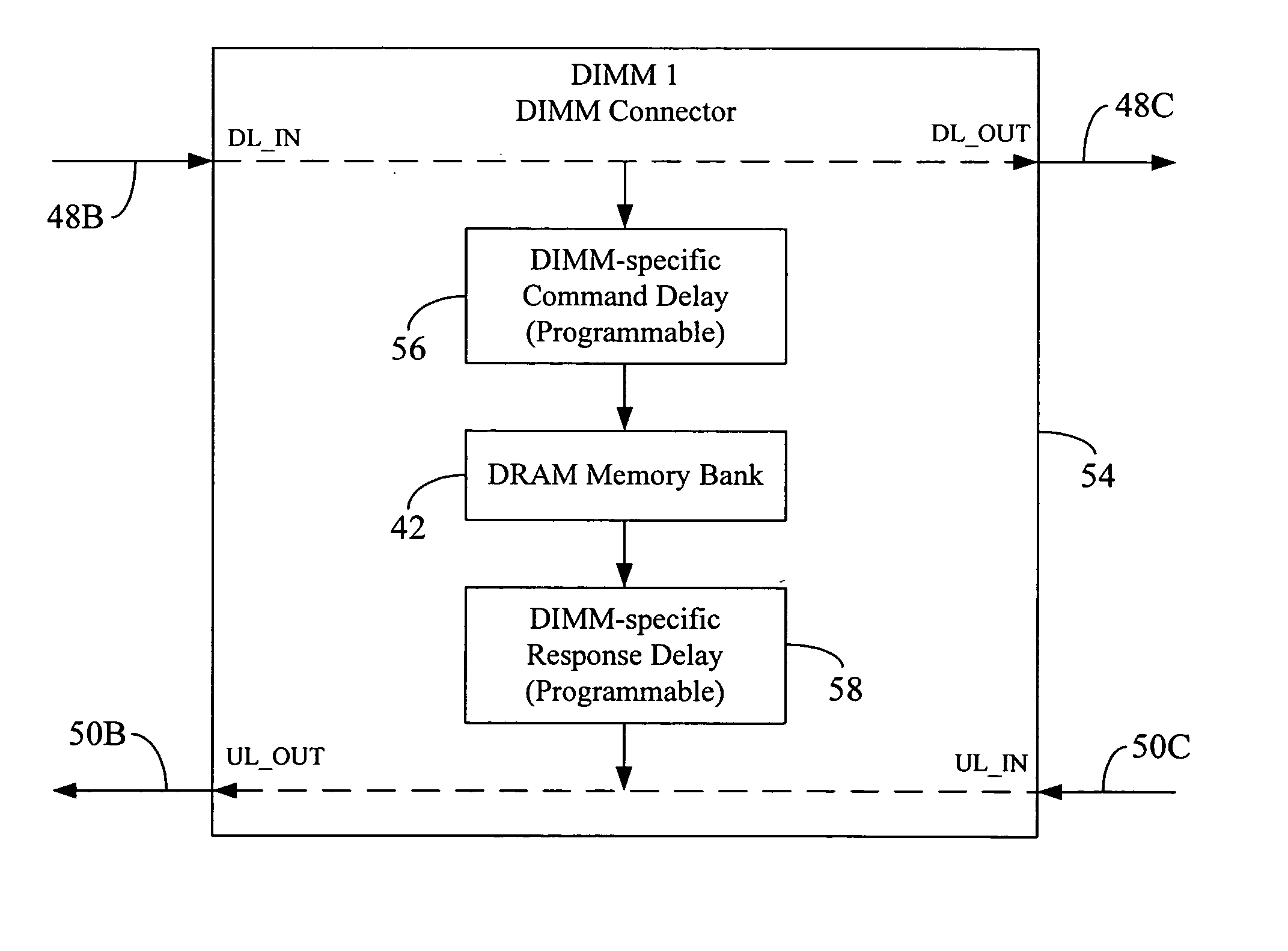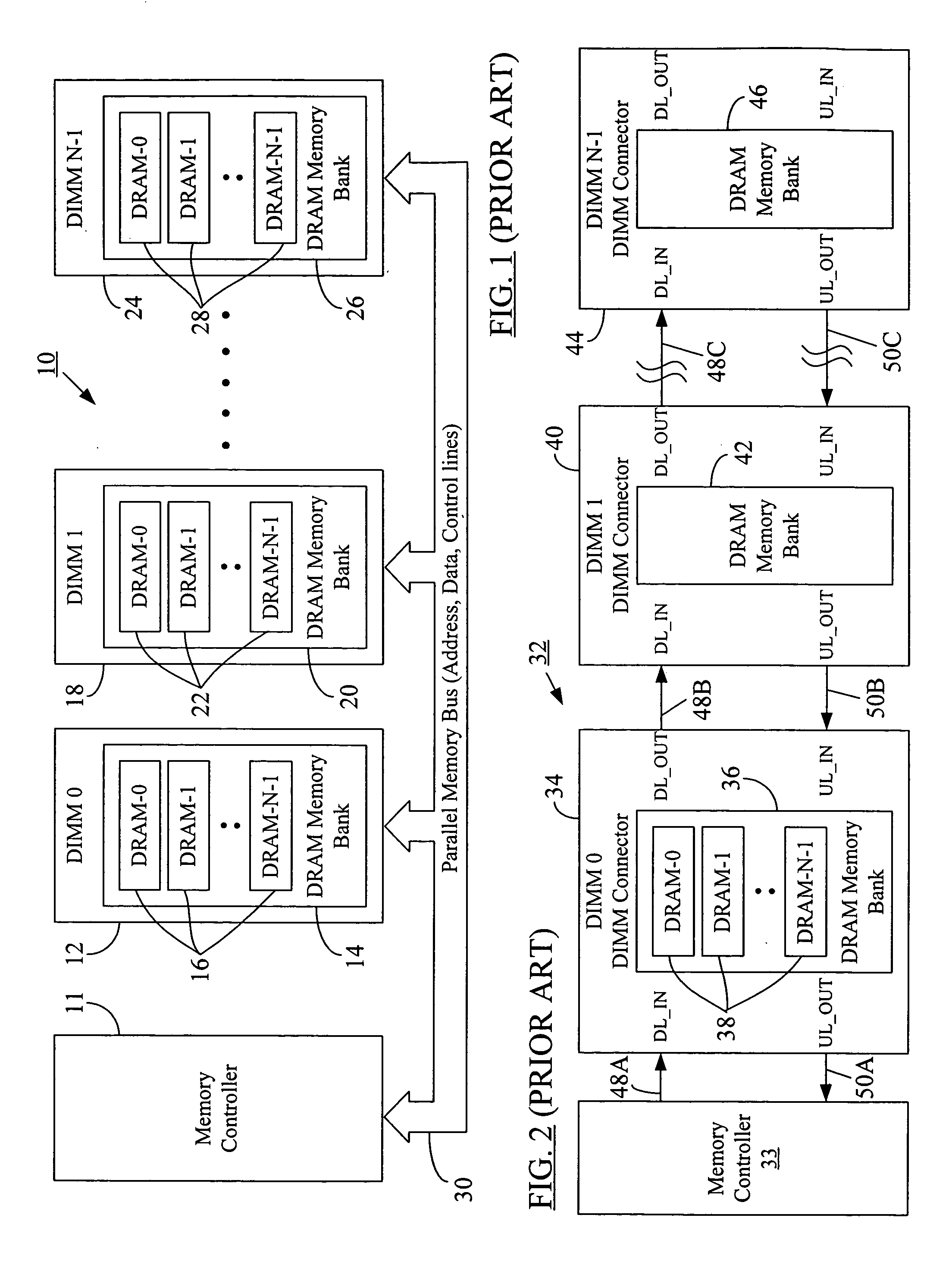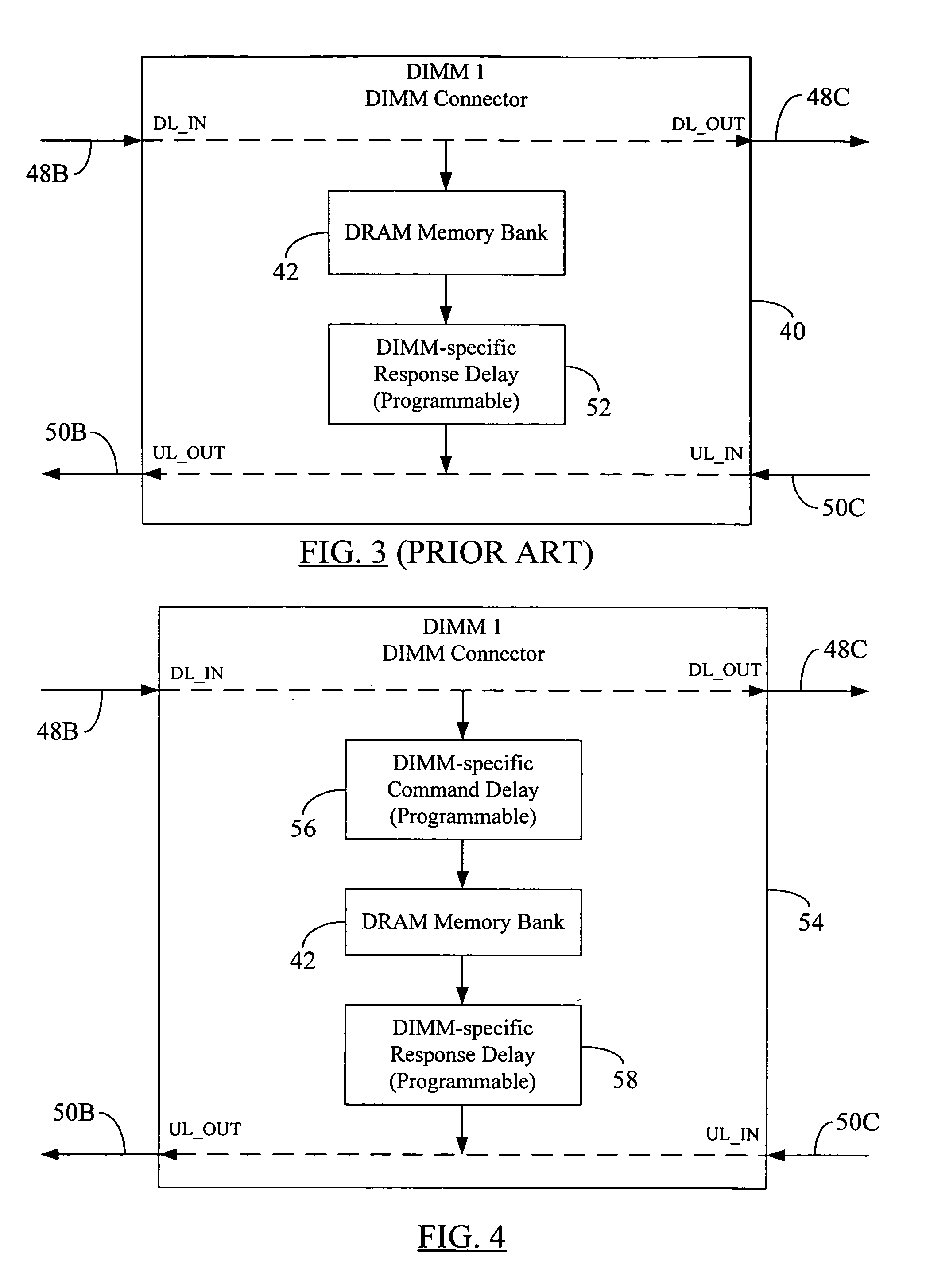Memory command delay balancing in a daisy-chained memory topology
a topology and memory command technology, applied in memory systems, instruments, sustainable buildings, etc., can solve the problems of overall delay in data transfer operations, inconvenient parallel bus configuration, and limited speed with which signaling can be carried out on the bus, so as to efficiently control the power profile of all the dram devices
- Summary
- Abstract
- Description
- Claims
- Application Information
AI Technical Summary
Benefits of technology
Problems solved by technology
Method used
Image
Examples
Embodiment Construction
[0030] Reference will now be made in detail to some embodiments of the present disclosure, examples of which are illustrated in the accompanying figures. It is to be understood that the figures and descriptions of the present disclosure included herein illustrate and describe elements that are of particular relevance to the present disclosure, while eliminating, for the sake of clarity, other elements found in typical data storage or memory systems. It is noted at the outset that the terms “connected”, “connecting,”“electrically connected,” etc., are used interchangeably herein to generally refer to the condition of being electrically connected.
[0031]FIG. 4 depicts a command delay balancing methodology according to one embodiment of the present disclosure. For ease of illustration, only one memory module (DIMM) 54 with a DIMM-specific programmable command delay unit 56 is illustrated. The DIMM 54 may be a modified version of the DIMM 40 in FIG. 3 and, hence, it is also designated a...
PUM
 Login to View More
Login to View More Abstract
Description
Claims
Application Information
 Login to View More
Login to View More - R&D
- Intellectual Property
- Life Sciences
- Materials
- Tech Scout
- Unparalleled Data Quality
- Higher Quality Content
- 60% Fewer Hallucinations
Browse by: Latest US Patents, China's latest patents, Technical Efficacy Thesaurus, Application Domain, Technology Topic, Popular Technical Reports.
© 2025 PatSnap. All rights reserved.Legal|Privacy policy|Modern Slavery Act Transparency Statement|Sitemap|About US| Contact US: help@patsnap.com



